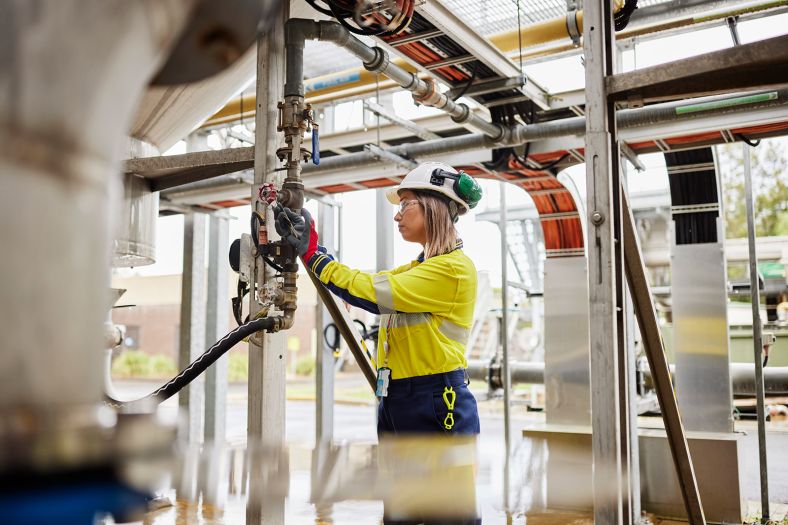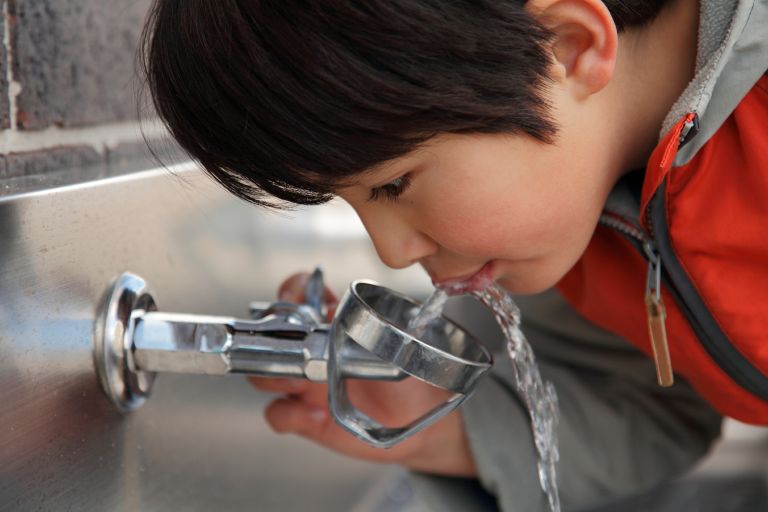Latest guidance on PFAS and drinking water
On Monday 21 October 2024 the National Health and Medical Research Centre (NHMRC) released proposed guidelines which outline new, lower recommended values of PFAS in drinking water.
PFAS chemicals - or per-and polyfluoroalkyl substances - are synthetic chemicals found in many everyday products. They have been widely used in many industrial and consumer applications as they are effective at resisting heat, stains, grease and water.
These substances are highly mobile in water and often referred to as "forever chemicals" because they break down extremely slowly in the environment.
Importantly, the NHMRC has confirmed that while the new proposed guideline values - which are yet to be confirmed or put in place - are lower than the current values, our drinking water remains safe as long as it continues to meet the existing guidelines.
The NHMRC used conservative assumptions in setting these proposed new values to ensure even small risks are addressed. The draft guidelines released by the NHMRC are an interim proposal and may change following further consultation and deliberation.
The NHMRC has said any detections of PFAS higher than the proposed new guideline values (also known as trigger values) should be viewed not as a pass/fail measure but should be investigated.
The NSW Government has welcomed the NHMRC release of proposed new drinking water guidelines for public consultation.
The state’s water authorities, in conjunction with the Department of Climate Change, Energy, the Environment and Water (DCCEEW), the NSW Environment Protection Authority (EPA), and NSW Health, are reviewing what the new proposed guidelines mean for the monitoring, testing and treatment of drinking water across the state.
What we are doing in NSW
The NSW Government appreciates the community’s concerns about PFAS. Our management of PFAS is informed by the best science and evidence, and we continue to operate with an abundance of caution when it comes to the presence of PFAS in drinking water.
The most important message is that all drinking water that complies with the current guidelines is safe.
In NSW drinking water is supplied to communities by Sydney Water, Hunter Water, or 83 local water utilities, most of which are owned and operated by local councils.
The NSW Government has recommended that all local water utilities in NSW assess the risk of PFAS and undertake an initial screening test from each drinking water supply system. DCCEEW and NSW Health are working to support all regional water utilities to test their drinking water for PFAS.

PFAS testing results
The NSW Government is committed to transparency, ensuring the community has access to up-to-date information, and supporting water utilities to deliver safe drinking water.
As confirmed by recent and ongoing testing, all water currently supplied by Sydney Water and Hunter Water complies with existing Australian Drinking Water Guidelines and remains safe to drink.
The Upper Blue Mountains has a drinking water supply from Cascade Water Filtration Plant that complies with the current Australian Drinking Water Guidelines but does not comply with the new proposed NHMRC Australian Drinking Water Guidelines.
On December 3, the NSW Government announced that Sydney Water had commissioned an advanced PFAS treatment system at the Cascade Water Filtration Plant. For more information visit Sydney Water.
Local water utilities
Local water utilities are responsible for testing and communicating with the community about drinking water monitoring results and water quality issues. The results of PFAS testing are expected to be available on local water utility websites.
As at 17 January 2025:
- All 83 local water utilities have tested all their supply systems.
- The results of the tests are below:
- 80 local water utilities have supplies that comply with the current Australian Drinking Water Guidelines and comply with the new proposed Australian Drinking Water Guidelines.
- Three local water utilities have supplies that comply with the current Australian Drinking Water Guidelines but were above the new proposed NHMRC Australian Drinking Water Guidelines:
- Tarcutta, in Riverina Water County Council area and
- Narrabri, in Narrabri Shire Council area.
- Warialda, in the Gwydir Shire Council area.
- Warialda, in the Gwydir Shire Council area initially did not comply with the current Australian Drinking Water Guidelines and was above the new proposed Australian Drinking Water Guidelines. Council‘s investigation identified two bores as the likely source of PFAS. These bores have been isolated and are not supplying water. In recent tests, the PFAS levels were below the current Australian Drinking Water Guidelines.
- More on the Gwydir Shire Council Facebook page here.
These utilities are working to manage PFAS levels in their drinking water. Refer to the utility websites for more information.
Who sets the standards for safe drinking water in NSW?
The National Health and Medical Research Council (NHMRC) has developed the Australian Drinking Water Guidelines.
The NHMRC is Australia's leading expert on public health and medical research. It bases its decisions on the latest scientific evidence, ensuring that guidelines are up to date and safe. It is a trusted independent body, with no commercial interest.
NSW follows these national guidelines, which are underpinned by available scientific evidence. They are used by state and territory health departments, drinking water regulators, local health authorities, and water utilities.
Water quality is one of the primary risks that local water utilities manage when providing safe drinking water every day.
Every local water utility has a drinking water management system that sets out their daily operations and critical control points on how they meet Australian Drinking Water Guidelines.
More information
- National Health and Medical Research Council proposed new guidelines on PFAS in drinking water
- Minister Jackson media release Monday 21 October - NSW Government welcomes NHMRC proposed guidelines on drinking water and PFAS
- PFAS and health effects: For information about exposure to PFAS and the possible health effects, read the Australian Government PFAS fact sheet
- PFAS and food standards: For information on guidance regarding tolerable daily intake and food guidance for PFAS, visit the Food Standards Australia New Zealand webpage
- NSW Health information on PFAS here
- The NSW Environment Protection Authority is leading an investigation program to assess the legacy of PFAS use across NSW. More information here
- Sydney Water PFAS information, including monitoring results, here
- Water NSW PFAS information here
